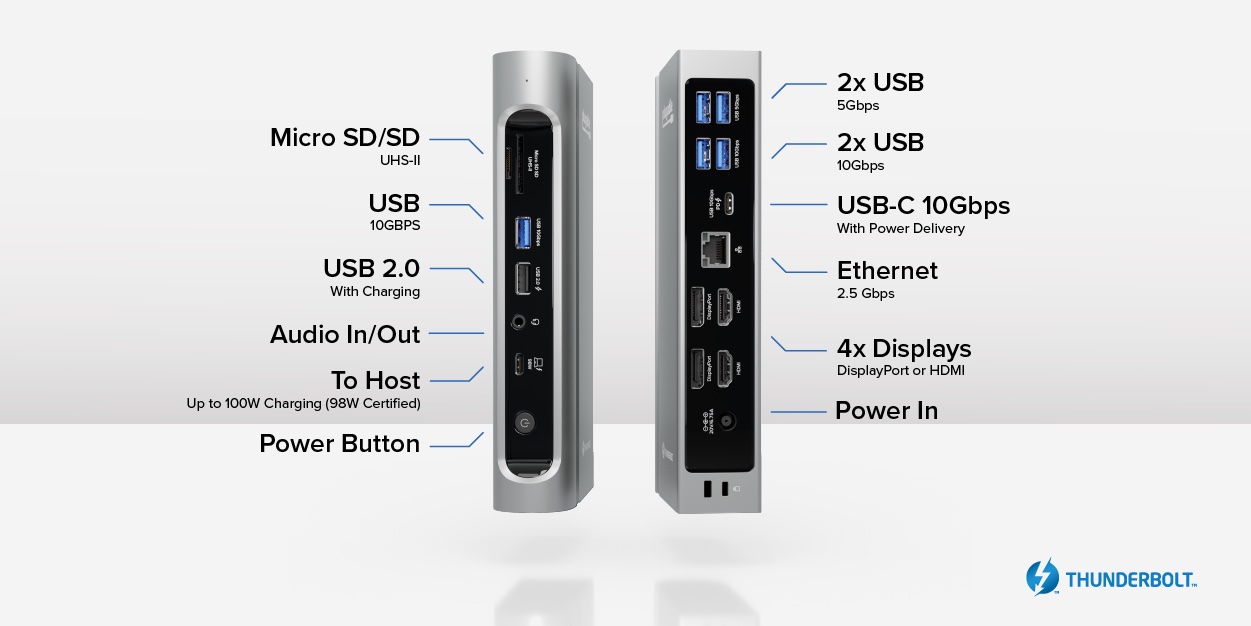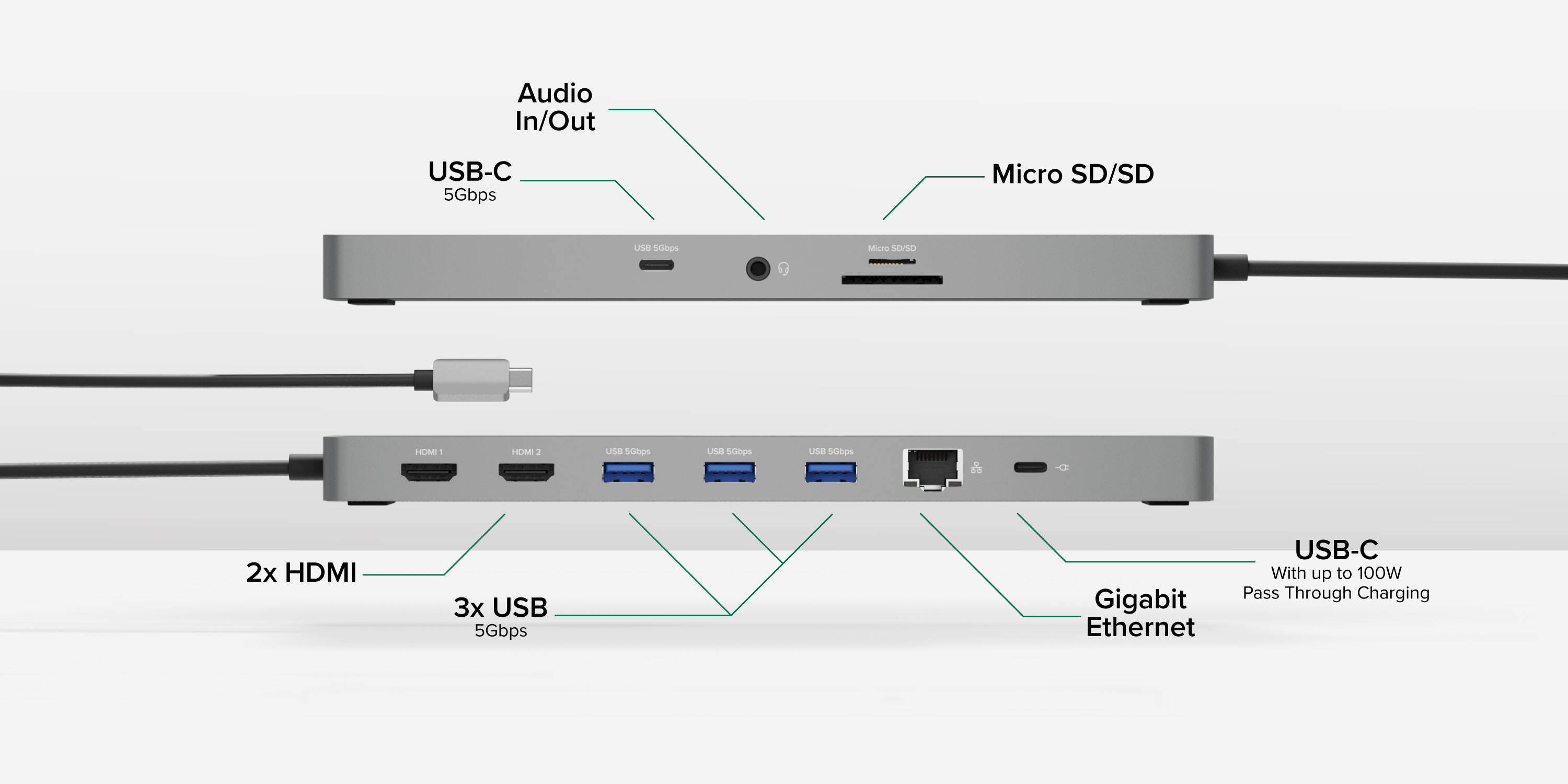Shouldn't there be 4x USB-C ports instead of USB-A?
Yes, because I need to be able to plug in all 4 of my USB-C to USB-A dongles... oh, wait...
why is the host on the front? that's sooooo dumb - looks like I'll stick with my caldigit for a bit longer
I think they're focussing on the laptop docking market so they think you're going to be regularly plugging and unplugging your host. Plus I suspect there are only a one or two different TB4 docks
actually being made with different companies either selling them in different cases or simply re-badging them, and one of those has put the host port on the front.
Why do these hubs have lots of USB-A ports, but never have a good amount of USB-C ports? Is there a technical reason such as available bandwidth?
USB 3.1 is USB 3.1 is USB 3.1 whatever shaped connector you use, so bandwidth isn't an issue. Routing DisplayPort and higher-level power delivery to more than a couple of downstream ports
would complicate things.
Yes I remember reading in the current usb-c spec they can't do splitting, only daisy chain. The next version will address this I think.
No, that was Thunderbolt 3 and earlier and only applied to the Thunderbolt protocol - USB4/Thunderbolt 4 (and newer TB3 implementations) can do hubs and there are several docks on the market (e.g. the Caldigit Element Hub) that have a few downstream TB4/USB4 ports. USB 3.1-over-USB-C hubs have been possible for ages - but they're like hen's teeth. The Caldigit Element and most other hubs with multiple USB-C use them internally.
Agreed. I don't care what the issue is, this is 2023 mostly accepting incoming connections from a decade ago.
True, its been frustrating that even if you
want to go to an all-USB-C setup the multi-port hubs haven't been there - but the big demand for hubs has been from people who just want their old ports back because USB-C offers no advantages to them. However, if you want all-USB-C there are a few choices now - the aforementioned Caldigit Element hub (...but don't expect more USB bandwidth than you'd get from a plain old hub), similar products from OWC and others, and this from Satechi, which is the only USB-C equivalent of the plain 'ol USB hub that I've seen:
https://www.amazon.co.uk/Satechi-4-Port-USB-C-Hub-Compatible/dp/B09BNXMHSL
Thing is, though, USB-C's party tricks are Thunderbolt/USB4 and support for things like displays and fast charging (which a hub won't support more than 1 or 2 of anyway). Unless you pay the premium for actual Thunderbolt or USB4 peripherals or can actually find something that uses the 2x modes of USB 3.2, the vast majority of USB-C use is
still only 5 or 10 Gbps USB 3.1 from the 00's or DisplayPort 1.2 from the 10's. In many cases the only technical advantage of USB-C over USB-A is the exciting opportunity to replace all of your existing cables with more expensive ones. The majority of USB-C
peripherals on the market are - at
most - 3.1 gen 2 and won't lose anything from being plugged in to one of the 10Gb type A ports on a dock like this. Quite often there's a type A cable or adapter in the box anyway. Then there's things like wireless mouse dongles and memory sticks where the USB-C versions are
bigger and protrude more from your laptop than USB-A versions which could fit most of the components inside the shaft of the connector... USB-C really isn't win-win...
Also, note that docks like this often only share 1-2 USB streams between all of their USB devices using a cascade of internal USB hubs, so even though they might have multiple 10Gbps ports you're not going to be able to fill all of them and use the full 40Gbps thunderbolt bandwidth for USB - plus some of those ports will have
multiple helpings of latency from the internal hubs. If you want lotsa USB and
don't need the display, ethernet, audio outputs etc. you may be better off just hanging a regular $30 USB 3.1 hub off one of the Mac's TB3/4 ports - in which case you just get a single hub driven by the Mac's internal controller.





